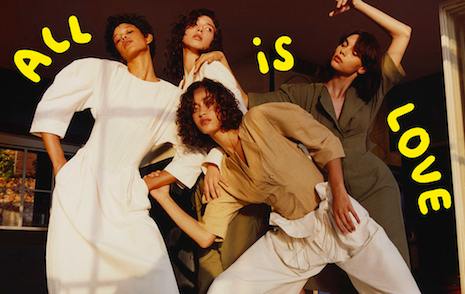- About
- Subscribe Now
- New York,
February 15, 2017

 Relaxed environment. Photo credits: Johnstons of Elgin
Relaxed environment. Photo credits: Johnstons of Elgin
By Mark Izatt
Luxury purchases were once status symbols above all else. For decades the luxury world seemed to be one of super-yachts, diamond-encrusted watches, It bags and big brand logos.
As news of hellish sweatshop conditions, devastating pollution, animal cruelty and blood diamonds became more prevalent, luxury purchases became intrinsically linked with guilt.
Over recent years, flaunting heavily branded luxury goods has been deemed vulgar by many industry-insiders, consumers and activists alike, and we have seen quieter aesthetics take the lead in response.
In an increasingly pressured world, how are the reasons for luxury purchases changing?
Icy reception
After the financial crash and in a time of environmental disaster, it can be harder to justify luxury purchases to naysayers. Could you not have spent that money on something less frivolous? Are not luxury purchases the first thing to go when we listen to our consciences?
It is becoming clear that this is not always the case.
We are more aware now than ever before that cheap buys often involve cheap labor and environmental damage. It is luxury brands that are able to buck this trend.
High-price points can ensure fair pay and the use of sustainable materials that are out of reach for many brands that strive to keep prices low and margins high.
Now that an outspoken climate change denier is president of the United States, voted in less than a year after the historic Paris Agreement saw more countries than ever before take political action against the issue, the environment is at the forefront of our minds.
Before President Donald J. Trump, millennials were already fired up by activist documentaries such as “Cowspiracy,” “Blackfish” and “Before the Flood,” and political activism was reaching a pitch unseen for decades.
Now that climate change is having palpable effects, it is hard for anyone to ignore.
Arctic ice is decreasing in volume by 13.3 percent per decade, leading to rapidly expanding deserts and rising sea levels that are devastating island communities and even threatening to put Florida under water in the not-too-distant future. And this is just the tip of the iceberg.
It is more important than ever that luxury brands to show that they have an important place in this landscape.
Herd mentality
Many luxury brands have already transformed themselves in response, and many have committed to detox their production processes with help from organizations such as Greenpeace and Canopy.
One of the most notable of these brands is Stella McCartney. McCartney’s brand has always been vegetarian, never making use of leather but rather innovative materials that imitate it such as Eco Alter Nappa, a water-based, solvent-free polymer coated with renewable vegetable oil.
In contrast, leather manufacture requires the use of harmful chemicals such as formaldehyde, coal-tar derivatives and cyanide-based dyes and finishes.
Before this process begins, there is the immense deforestation required to create pastureland for cows and the startling amount of greenhouse gas that the animals produce – primarily methane, which has 23 times the impact of CO2 on the climate.
A recent film by Stella McCartney explains why the brand chooses viscose made from wood grown in sustainable Swedish forests, meaning there is no loss of habitat for endangered species.
A delicate balance is struck: McCartney maintains a luxury fashion aesthetic and avoids the patronizing tone often associated with environmental messages.
 Stella McCartney: What's not to love? Photo credits: Stella McCartney
Stella McCartney: What's not to love? Photo credits: Stella McCartney
Scottish cashmere brand Johnstons of Elgin, founded more than 200 years ago, still manufactures all its garments in small mills in Scotland and has a devotion to the responsible treatment of suppliers, employees and the environment.
Johnstons is a founding member of the Sustainable Fibre Alliance, eschewing easy mass-supply methods to work closely with goat herders in Mongolia, China and Afghanistan to improve their situations, support their families and communities, and preserve the traditional farming methods on which they rely.
Each herder looks after around 200 goats that live as near to wild as possible, minimizing environmental damage and ensuring the animals are treated with care.
Once cashmere fibers reach Johnstons of Elgin’s mills, they are worked into completed garments on the premises using new green technologies wherever possible, and consumers are encouraged to make use of the brand’s repair service to reduce wastage and allow them to treasure garments for longer.
Retaining the sparkle
The environmental conversation is reaching all corners of the luxury industry: lab-grown diamonds, for example, are becoming a viable alternative to mined ones, perfumers and chefs are looking to source ingredients locally to reduce the pollution involved in importation, and many brands are pledging money to conservation initiatives and environmental charities.
Online luxury boutique Rêve En Vert sells only sustainable high-end products, taking some of the effort away from the consumer and providing a space in which it is easy to make greener choices.
Over recent years, hundreds of brands have made formal promises to reduce their impact on the environment, many of them being awarded Positive Luxury’s Butterfly Mark as testament, and a growing number taking part in Greenpeace’s Detox 2020 which requires a pledge to phase out toxic production materials by 2020.
It is clear to see that telling stories of provenance, manufacture and sustainability can help consumers understand why it might be worth investing in more expensive products.
But does all this talk about supply-chain and manufacture detract from the mystique that surrounds luxury brands?
In fact, can a purchase even be called luxury if the value it offers is related primarily to environment and ethics?
This may be the case for many consumers, but the luxury industry is placing less emphasis on heritage and authenticity than ever before.
A new generation of ethically minded consumers will be content to wear lab-grown diamonds as long as they sparkle, without feeling the stone is devalued by its provenance.
If brands continue to offer luxurious experiences for consumers at all touch points, being elegantly outspoken about environmental policies will prepare them for future longevity.
MARKETERS HAVE a huge opportunity to give transparency into their increasingly ethical production processes, information about which is usually buried on Web pages that the average consumer has no interest in seeking out.
If brands continue enacting the changes that they have begun to make, the value of the luxury purchase will not only be in glamour, but in a clear conscience.
 Mark Izatt is a luxury planner at Cream
Mark Izatt is a luxury planner at Cream
Mark Izatt is a luxury planner at Cream, London. Reach him at mark@creamuk.com.
Share your thoughts. Click here